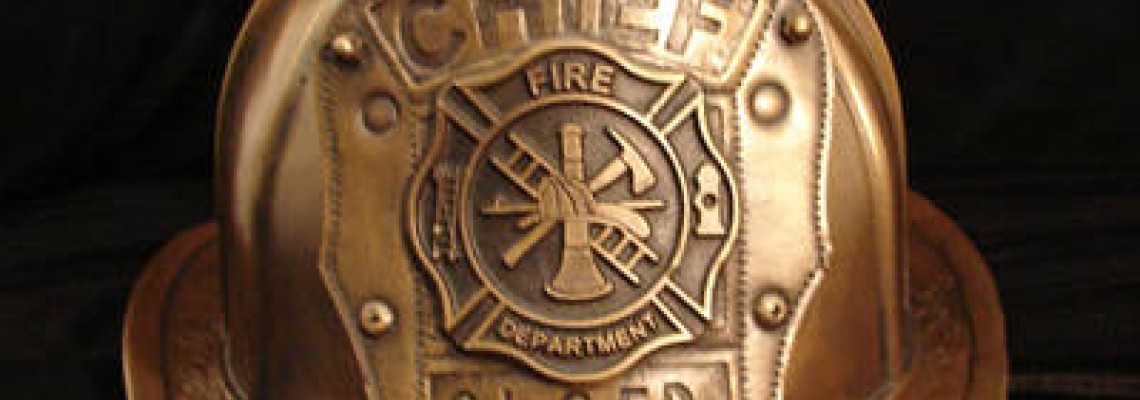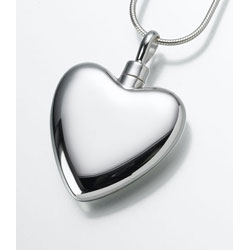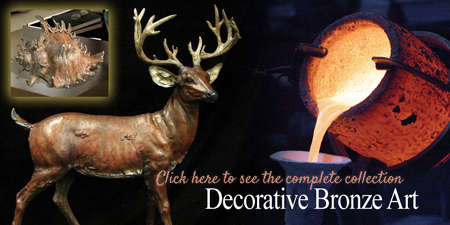Bronze Casting Process

The lost-wax process of casting is one of the oldest methods used in creating bronze statues and urns. Introduced in Ancient Greece, this practice was popularized during the Renaissance Period. Today, foundries have improved upon this method, using modern technology to create various styles and sizes of bronze urns and statues, as well as monuments, awards and collectible art.
Bronze sculptures and urns are not only elegant, but durable enough to withstand the test of time. Bronze will not rust and is a harder alloy than iron, brass or silver. Many foundries in the United States use the lost-wax casting process utilizing the talents of local craftsmen and artists.
Bronze Sculpture Urn Casting Process
The lost-wax method of bronze casting is a multi-step process:
1. Creating the Sculpture: The artist or mold-maker designs the original sculpture or urn model out of clay, wax or similar material. All the fine details must be captured during this stage.
2. Making the Mold: The master mold maker creates a latex, silicone or polyurethane mold of the original sculpture or urn. This outer mold is more rigid and is the exact negative or opposite of the original model. Once set, a backup fiberglass shell or mother mold is applied to support the outer mold during the wax-pouring process. Most molds are comprised of two or more parts, and shims are placed between the pieces so they can easily be put back together.
3. Casting and Chasing the Wax: Once prepped, wax is painted into the mold to capture all the details. The pieces of the mold are put together and more wax is evenly poured and coating the piece. When it is cooled, another layer of wax is added until it reaches a thickness of 3/16 to 1/4 of an inch. Once this has cooled, the mother mold and outer mold are removed revealing only the wax casting. Seam lines are removed or chased, and the pieces are correctly aligned.
4. Gating and Spruing: Wax rods called spurs and gates are attached to the sculpture. A cup is then placed at one end, which will capture the molten bronze when it is poured. This gate system is important because it allows the molten bronze to flow through and the gases to be vented.
5. Creating a Ceramic Shell: A secondary mold is made from slurry, a liquid binder solution, and covered with silica sand. Allow for each layer to dry first before adding the next. This will support the molten bronze when it is poured. The heavier the piece is, the thicker the shell. This is done on both the inside and outside of the wax mold making the piece hollow.
6. Casting the Bronze: The ceramic shell is placed in a burn-out oven to be dewaxed. Once cooled and inspected for defects, they are then placed into a pouring pit where the molten bronze (heated to between 1,900 and 2,100 degrees) is poured. They are cooled, solidifying the bronze
7. Devesting the Sculpture: The ceramic shell material is removed and an unfinished bronze casting is presented. Excess shell material is cleaned away. 8. Reassembling and Chasing the Metal: If the sculpture were in two or more pieces, they are now reassembled. The piece is carefully inspected for inclusions or defects, many of which can be fixed at this point of the process. The sculpture or urn is polished and prepared for the coloring process, which is also known as the patina. Several different polishing tools are used in this part of the process.
8.Reassembling and Chasing the Metal: If the sculpture were in two or more pieces, they are now reassembled. The piece is carefully inspected for inclusions or defects, many of which can be fixed at this point of the process. The sculpture or urn is polished and prepared for the coloring process, which is also known as the patina. Several different polishing tools are used in this part of the process.
9. Adding the Finished Color: Through a process called patination, the piece’s finished color is added. The desired color of the sculpture or the urn depends on the chemicals used. The piece is sealed to protect its finish.
10. Packaging for Delivery: The bronze sculptures and urns are carefully packed for shipping.


